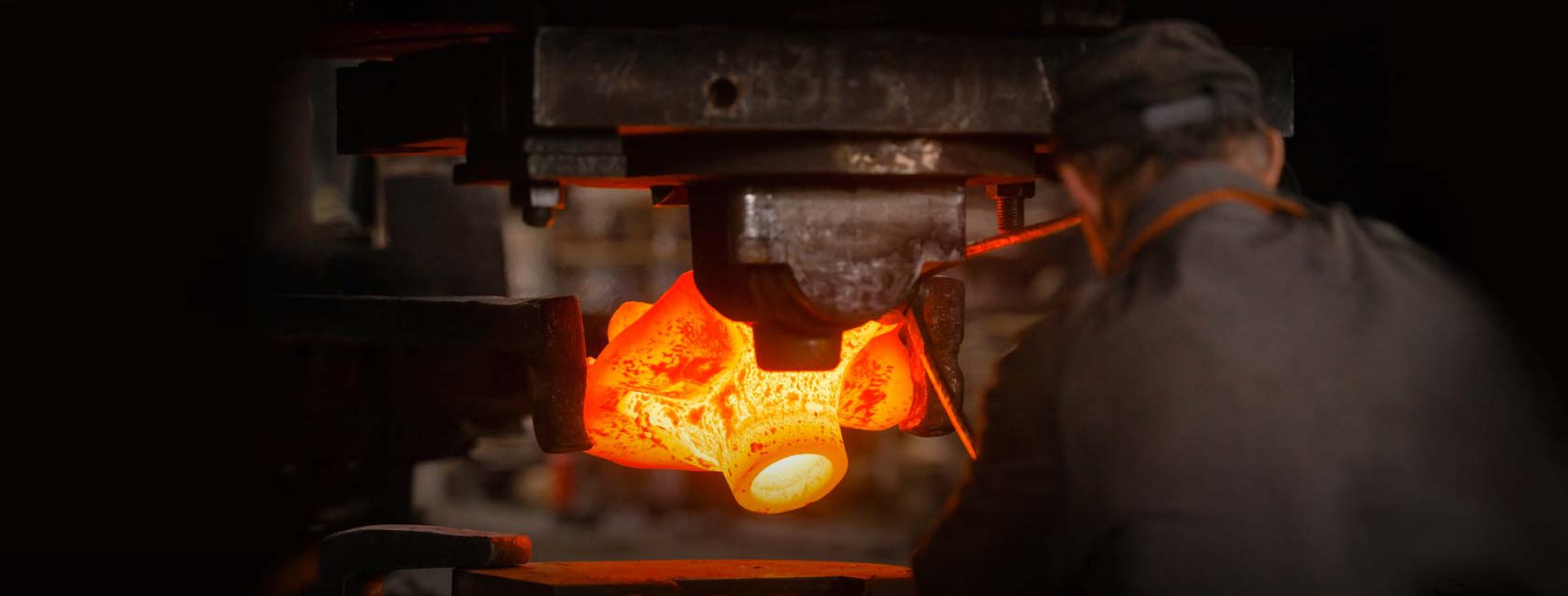Steel Forging Purchasing is a very professional job, and require related technical knowledge of steel forging, also need fully communicate with forging engineers. This article we list out some main guidelines of purchasing steel forgings for buyers.
I. Select an Steel Forging Company
To obtain high quality steel forgings, it will require joint efforts and close collaboration of both sides (supplier & purchaser). Buyers need to spend a certain amount of time to develop suppliers before purchasing forgings. Except to choose a reliable steel forging supplier, communication between the purchaser and supplier is also very important before the design of steel forgings. Therefore, purchasers and suppliers should focus on establishing long-term and mutually beneficial cooperation and good interactive relationship.
Currently, there exsit two kinds of different production processes of steel forging. One is closed die forging process, a kind of precision forging method for medium and small products, normally no more than 50kgs. The other is open die forging process, with the workforce of simple forging dies, the billet is shaped for forging blanks. By comparison, the size accuracy and surface roughness of closed die forging is much better. These two forging methods are different due to the vary of production processes. Open die forging is used to produce large simple component, while closed die forging can make parts with complex shapes (see open die forging vs. closed die forging). So, forging purchasers must first understand the company production technology and detection methods, then to determine if the company can achieve expected quality requirements for steel forgings. Also need to know the production scale and management level about the company, thus to ensure on time delivery of bulk orders for qualified products.
II. Focus on the Process of Steel Forging
One of the prominent advantages of closed die forging is the flexibility of the structure design. So, the forging buyer should first learn the design knowledge of the closed die forging process .The structure of the parts should comply with the requirements of closed die forging, which will be easy to mold release, forging, and also try to achieve uniform wall thickness. This will benefit for establishing a good temperature distribution, avoiding some defects like cold shut, ect . At the corner of the part, the designer should design appropriate forging round corners and the acceptable flash width. Especially in new product design, engineers who are familiar with forging process should participate in, so as to make forging design and material selection more reasonable, easy to guarantee forging quality, and can reduce the cost of steel forgings. Another issue we would like to mention is that if the quantity is very small, to be economic, we could use investment casting
method instead.
Buyers when sending a RFQ to steel casting company, should try to accurately explain in detail about material and technical quality requirements, such as the required machining sections, locating datum, heat treatment, surface treatment, packaging requirement, inspection and test items and the inspection report, etc. The annual requirements of the steel forgings, the quantity of each order, and the place of delivery shall be provided. It is best to provide the weight of forgings to facilitate the foundry quotation. The delivery cycle and payment terms are also important factors to be considered, which should be stated at the time of inquiry or quotation. Requirements about the forging quality should be economic, applicable and reasonable, on the premise of meet the use function, higher requirements will increase the difficulty of manufacturing, may also affect the production cost and price, this is not good for both purchaser and manufacturer.
When getting in touch with a steel forging company, buyers should learn about the equipment facilities and capability of steel forgings. If the part is less than 10kgs, the supplier do not need to equip with very large tons forging press, 1000 ton is enough. But the part is around 30kg, then 1600 ton is necessary, or even heavier. It is not reasonable in some drawings that make the very close tolerance for forging blanks, normally should design the tolerance within ±0.5mm.
IV. Drawing or Sample Providing
Part drawing is the main quotation and production basis, enough information can help to avoid misunderstanding. Detailed drawings should clearly show the part name, material, tolerance, surface roughness, critical dimensions, processing base, processing surace and the machined surface, modify content, inspection requirements, heat treatment and surface treatment requirements, etc. We suggest steel forging purchasers to map forging and finished machining drawing seperately. When the customer has requirement on parting line, shall specify the location of the position or not allowed to set in the drawing. For irregularly shaped complex forgings, 3D drawing should be provided, which will be better for potential supplier to correctly understand drawings and design forging dies.
V. Forging Dies and Sample Confirmation
Production of steel forgings starts from the forging dies design and manufacturing, tooling production cost is generally listed in the quotation alone, is a one-time cost, and should be paid by the purchaser in advance. Of course, forging dies ownership generally belong to the purchaser, can be preserved and used by the supplier, but both sides should reach an agreement at the start dealing for the forging dies.
Due to the need of process, when suppliers need to modify the original drawing design, they should map forging or separately write amendments to purchaser for confirmation, then to make forging dies.
After the forging die is ready, supplier need to provide samples to purchaser first to check the size, assembly, or do the necessary testing. Only after passing testing of the sample, can the buyer start mass production. Sometimes it is not very convenient to modify some sizes, for those out-of-tolerance dimensions that will not affect use function, customers can directly use and don’t require to modify forging dies. In this case, it is better to ask customer to modify the drawing tolerance according to actual samples, or written note when confirming sample, in order to avoid dispute when mass production in the future.
Afrer checking the drawing or sample, when the design is modified, proper forging dies fixing fee will be charged. So before making dies, purchasing party shall carefully review the drawings and keep good communication with the manufacturer.
Sample material generally should be consistent with drawings requirements, when it is difficult to make sample in required material, supplier should negotiate with buyer in advance. After getting agreement with the customer, they can use another kind of material with similar, but the sample will be only to used to check the size and geometry shape. Again when mass production, drawing material will be applied.
VI. Production Order
Before placing a production order, purchasers should confirm if below issues have been implemented:
1. After die making, many dimensions of forgings will be guaranteed by forging dies, supplier may pay attention to only a few important sizes when mass production. Purchaser needs to clear state the key control size, surface requirement and acceptance criteria.These key information will help to control the quality during production and improve the production efficiency.
2. Order in advance. Steel forging is different from mechanical processing, it is also different from casting process. During steel forging process, there are lots of auxiliary process, so the production cycle is long, it will require around a week time. So when purchasing, buyer should know the necessary lead time, and issue a purchase order in advance for on time delivery.




